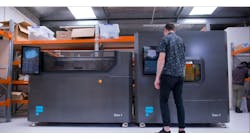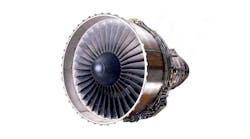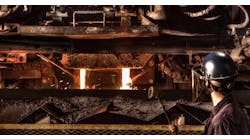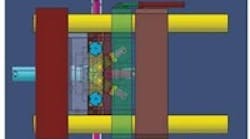An automobile engine block is made of two distinct, functional units: the cylinder block (the upper part housing the cylinders), and the crankcase (lower part housing the crankshaft. Diecasting in aluminum has proven to be an option for producing these engine castings, offering high output and flexibility in component design. The approach may grow even more attractive following the development of a new diecasting machine design and changes in diemaking process.
Engineers at Buhler Druckguss AG teamed with German diemaker Schaufler Tooling to find improvements to eliminate some perceived drawbacks of conventional diecasting.
Among these perceived drawbacks were long cycle times, large and heavy dies, high wear on the cooling water jacket inserts, long periods of downtime due to time-consuming die maintenance (for example, removing the moving die half to change the water jacket), problems with occasionally injecting molten metal behind the core slide guides, frequent die leakage, frequent breakage of ejector pins, and even uncontrolled die heating and cooling.
Two new cost-optimized engine block designs were developed for in-line and V engines. In the new concept, the water jacket and the contour core slide can be pulled by a certain stroke length after partial solidification of the metal. This reduces the heat input from the aluminum into the water jacket, which in turn appreciably increases the life cycle of the water jacket.
In addition, the project team implemented a number of die design measures to increase availability, and thus the cell's utilization rate. For example, the contour core slides can easily and quickly be changed on the machine itself. A special locking design reduces the deflection of the outer slides by as much as 50%. This, in turn, reduces the injection of molten aluminum behind the slides while improving the dimensional accuracy of the engine blocks. A new technique for sealing the cooling bores diminishes their propensity to leak. And, a concept that eliminates the need for ejectors in making in-line engines additionally prevents downtime.
Also in the new concept, the diecasting machine fulfills certain functions of the conventional die. This eliminates the need for ejector boxes and ejector tables in the new dies. This and additional weight-reducing measures cut die costs by 25% for V engines and 10% for in-line engines.
Several productivity enhancements also are incorporated. An optimized temperature control design, the newly developed "Flextool" die-spray system from Acheson Industries, and synchronized machine motions allowing simultaneous spraying of both die halves save valuable seconds. These features cut the cycle time 10-20%, depending on the weight of the raw part.
At press time, a prototype of a V6 engine crankcase produced with this technology is being tested, and a prototype die is being developed for producing and evaluating an in-line engine crankcase. Testing is being conducted at the Diecasting Center Laichingen in Laichingen, Germany, a facility set up jointly by Buhler and Schaufler.









